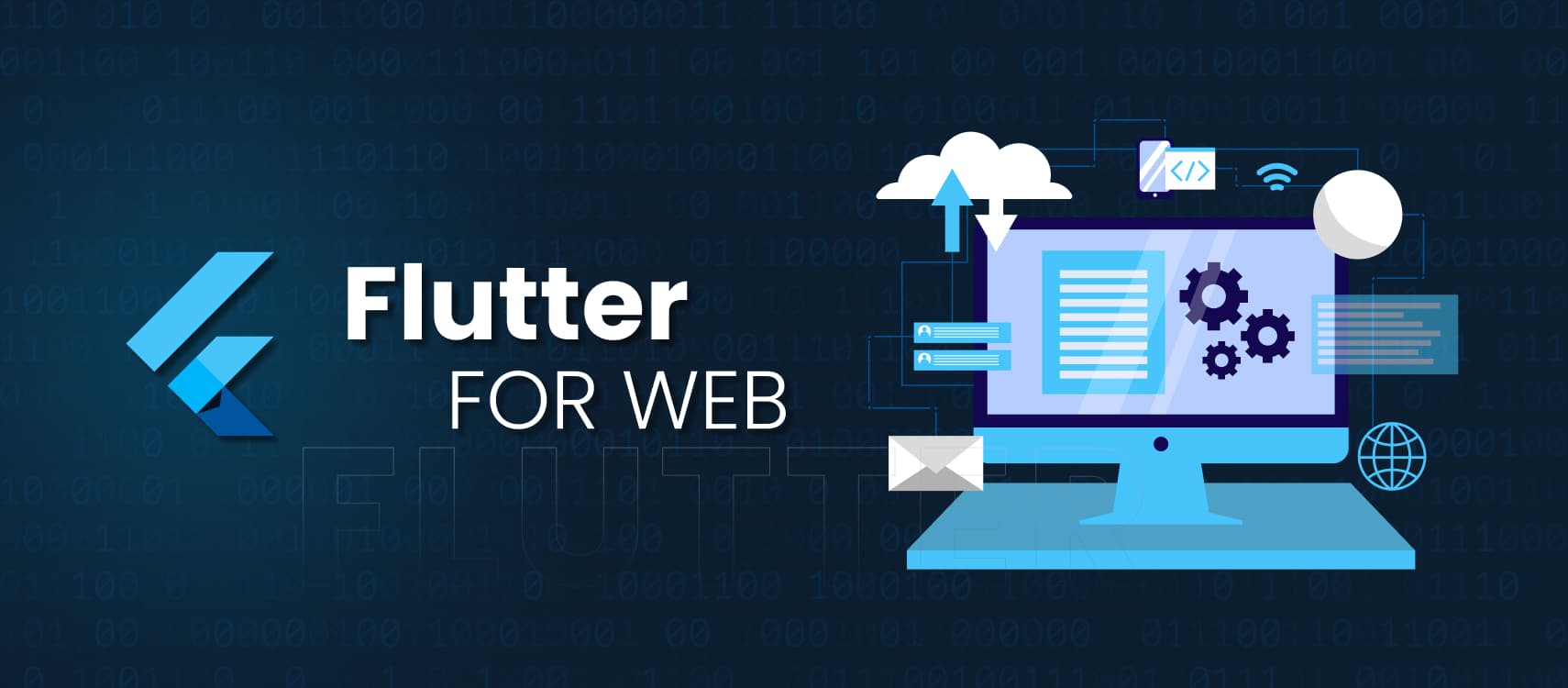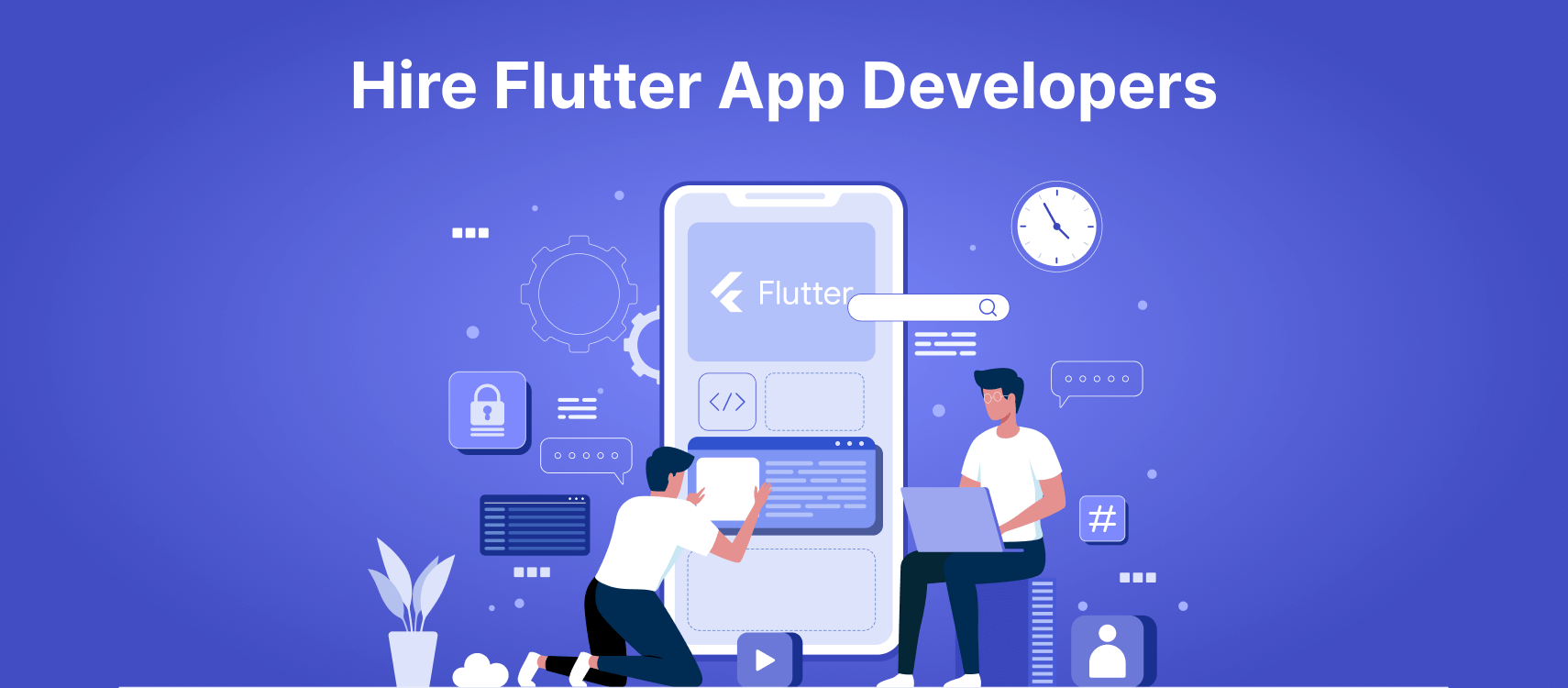Table of Contents
- Key Features
- Advantages
- Starts with Flutter for Web Development
- Challenges and Considerations
- Ending Notes
Flutter, Googles open-source UI framework, has gained widespread acclaim for its ability to create stunning, natively compiled applications for desktop, web, and mobile app development using a single codebase. While initially known for mobile app development, Flutter has now extended its reach to web development, allowing developers to build web applications with the same ease and flexibility that Flutter provides for mobile development.
In this blog post, we will explore Flutter Web development and will take a closer look at its features, advantages, and how to get started with building web applications using Flutter.
Key Features of Flutter for Web Development
Flutter for Web inherits many of the features that have made Flutter mobile app development a popular choice. Some of the key features of Flutter for web include the following.
-
Single Codebase:
One of the primary advantages of Flutter is the ability to use a single codebase for multiple platforms, including web. Developers can write code once and use it to build both mobile and web applications, reducing development time and effort.
-
Rich Set of Widgets:
Flutter offers a rich library of customizable widgets that enable developers to create visually appealing and interactive web applications. These widgets can be easily adapted for web interfaces, ensuring a consistent and responsive user experience.
-
High Performance:
Flutter’s engine, powered by Skia, is known for its high performance and fast rendering capabilities. This translates well to web development, where smooth animations and responsive user interfaces
are essential. -
Hot Reload:
Flutter’s hot reload feature, which allows developers to instantly see the effects of code changes, is equally valuable for web development. This rapid development cycle speeds up the web application development process.
-
Flutter DevTools:
The Flutter DevTools suite provides a set of tools for profiling and debugging Flutter applications. These tools are available for web development as well, making it easier to identify and resolve issues in web applications.
-
Responsive Design:
Flutter for web encourages responsive design practices, allowing developers to create web applications that adapt seamlessly to various screen sizes and orientations.
Advantages of Using Flutter for Web Development
Developers and businesses can benefit significantly from leveraging the Flutter Web application for extending their digital footprints. Here are some of the advantages.
-
Cost-Efficiency:
Building web applications with Flutter for web can be cost-efficient as it allows developers to leverage the same codebase used for mobile apps. This reduces development time and maintenance costs.
-
Faster Development:
Flutter’s hot reload feature accelerates the development process, enabling developers to make changes and see the results in real-time. This can lead to faster time-to-market for web applications.
-
Consistent Branding:
With Flutter for web, businesses can maintain a consistent brand identity across both mobile and web platforms, ensuring a cohesive user experience.
-
Performance and Responsiveness:
Flutter’s high performance and responsiveness are well-suited for web applications, especially those requiring smooth animations and real-time updates.
-
Community and Support:
Flutter has a growing and active community of developers, which means access to a wealth of resources, packages, and support. The availability of third-party packages can further streamline web development.
Getting Started with Flutter for Web Development
Before you reach out to the leading Flutter development services for your web project, it is important to have a solid understanding of the development steps leading to the final product. Here are the essential steps to get you started.
-
Install Flutter:
Begin by installing Flutter on your development machine. You can find detailed installation instructions on the official Flutter website.
-
Create a New Flutter Web Project:
Use the
flutter createcommand to create a new Flutter web project. This command sets up the necessary project structure and files. -
Write Flutter Code:
Write your web application code using Flutter’s widget-based approach. You can use familiar Flutter widgets and create new ones specifically designed for web interfaces.
-
Testing:
Use Flutter’s built-in testing tools to ensure your web application functions as expected. Flutter’s testing framework allows you to write unit and widget tests to verify the behavior of your web application.
-
Optimize for Web:
While Flutter is designed for cross-platform development, optimizing your app’s design and layout for the web is crucial. Pay attention to responsive design principles to ensure your app looks and performs well on various screen sizes.
-
Deployment:
Once your web application is ready, you can deploy it to your chosen web hosting platform. Flutter provides deployment instructions and guidance on how to serve your web app to users.
Challenges and Considerations
While Flutter for Web offers numerous advantages, it’s essential to be aware of potential challenges and considerations. Here we mention some of them.
-
Browser Compatibility:
Ensure that your Flutter web application is compatible with various web browsers, including Chrome, Firefox, Safari, and Edge. Extensive testing is necessary to address any browser-specific issues.
-
Customization:
While Flutter’s widget library is extensive, you may encounter situations where you need to create custom web-specific widgets or adapt existing ones for the web. This can require additional development effort.
-
SEO and Web Crawlers:
Flutter for web generates dynamic content using JavaScript, which can pose challenges for search engine optimization (SEO) and web crawlers. Implementing SEO best practices may be necessary for web applications requiring high search visibility.
-
Third-Party Packages:
While Flutter’s ecosystem is growing, not all packages and plugins are available for web development. Verify the availability of essential packages for your project before committing to Flutter for web.
Ending Notes
Flutter for Web represents a significant step forward in the evolution of the Flutter framework. Its ability to create responsive, performant, and visually appealing web applications from a single codebase has made it an attractive choice for web developers and businesses alike. By leveraging Flutter for web, you can streamline development, reduce costs, and provide a consistent user experience across different platforms.










